Football competition officially began in 1869. Rutgers University and its neighbor, Princeton, played the first game of intercollegiate football on Nov. 6, 1869, on a plot of ground where the present-day Rutgers gymnasium now stands in New Brunswick, N.J. Rutgers won that first game, 6-4. Athletes wore doff hats, coats and vests and use suspenders as belts. To distinguish themselves from the bareheaded visitors, 50 Rutgers students, including players, donned scarlet-colored scarfs which they converted into turbans. Since 1869, the evolution of football equipment has come a long way since then. Today, helmets with protective face masks, shoulder pads, thigh pads, knee pads, and cleats are worn to improve player safety and limits football athletes’ chances of getting physically hurt after each physical contact, such as tackling. Here is the evolution of some of the football equipment over the last 147 years since the first intercollegiate football game played by Rutgers and Princeton in 1869.
http://www.scarletknights.com/sports/m-footbl/archive/first-game.html
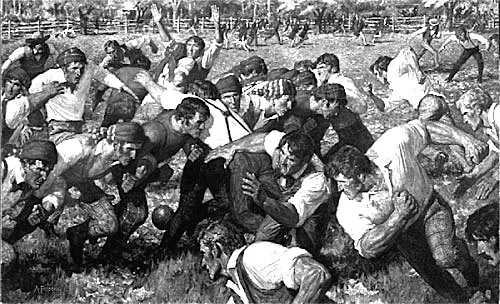
Helmets
Helmets, which are very important for the sport of football to prevent concussions and other brain related injuries when tackling and blocking, wasn’t worn during the first college football game. During the first football game played between Rutgers and Princeton, scarfed turned turbans were worn on the heads of these football athletes. Helmets weren’t officially worn in football until the early 1900’s and they weren’t even required to be worn by football athletes until the mid-1940s. The first helmets wore were made of leather with light padding inside. By the 1950s, a new polymer based helmet was introduced, and by 1955, a face mask was suggested in order to cut down on the amount of broken noses and teeth. Since the 1950s, padding has been added to the front, back and sides of the helmet to protect players’ skulls from violent collisions and improving their chances of walking away from a clash with fewer injuries. The helmet material changed very little over the years until the polycarbonate version we know today emerged in the 1990s. Even though there has been a lot of controversy about helmets not working today in preventing concussions of football athletes, the helmet technology is still improving today. Riddell, football helmet manufacturer, has taken steps toward increasing player safety by creating more helmets that helps minimize the impact of a vicious hit by diffusing the energy of the hit throughout the helmet and using sensors inside the helmet to alert the sideline of a possible concussion.
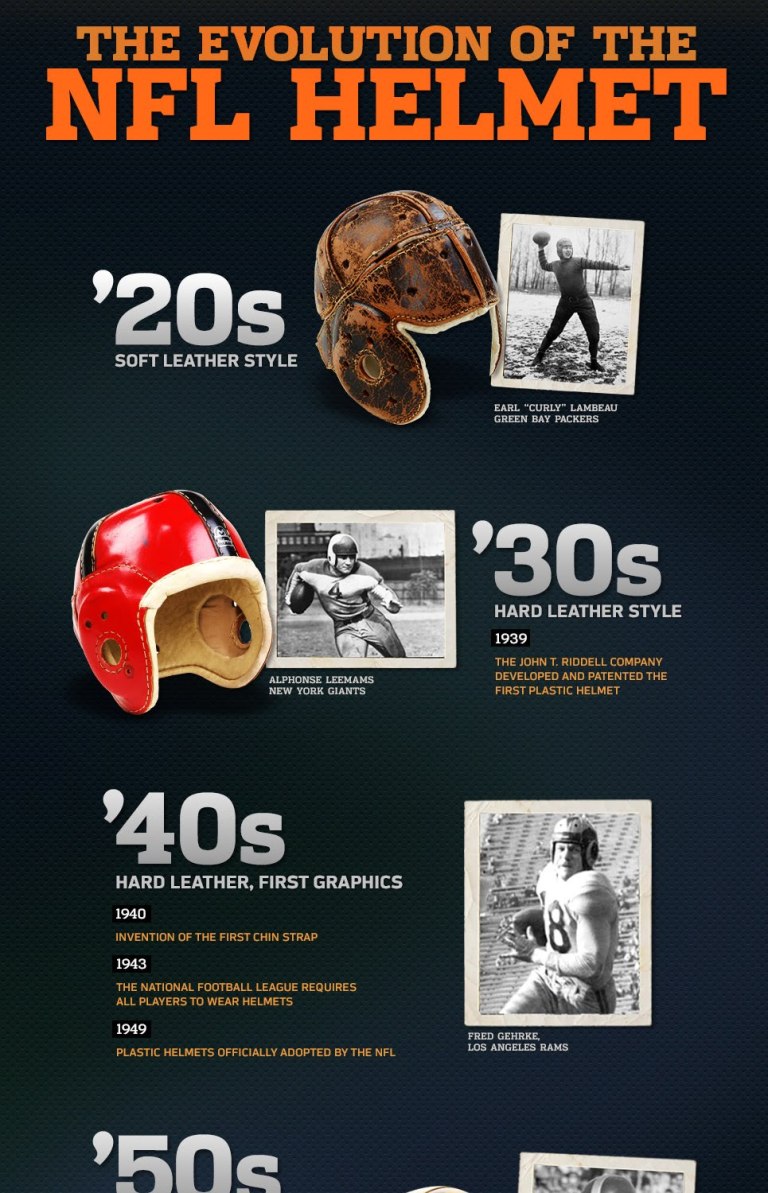
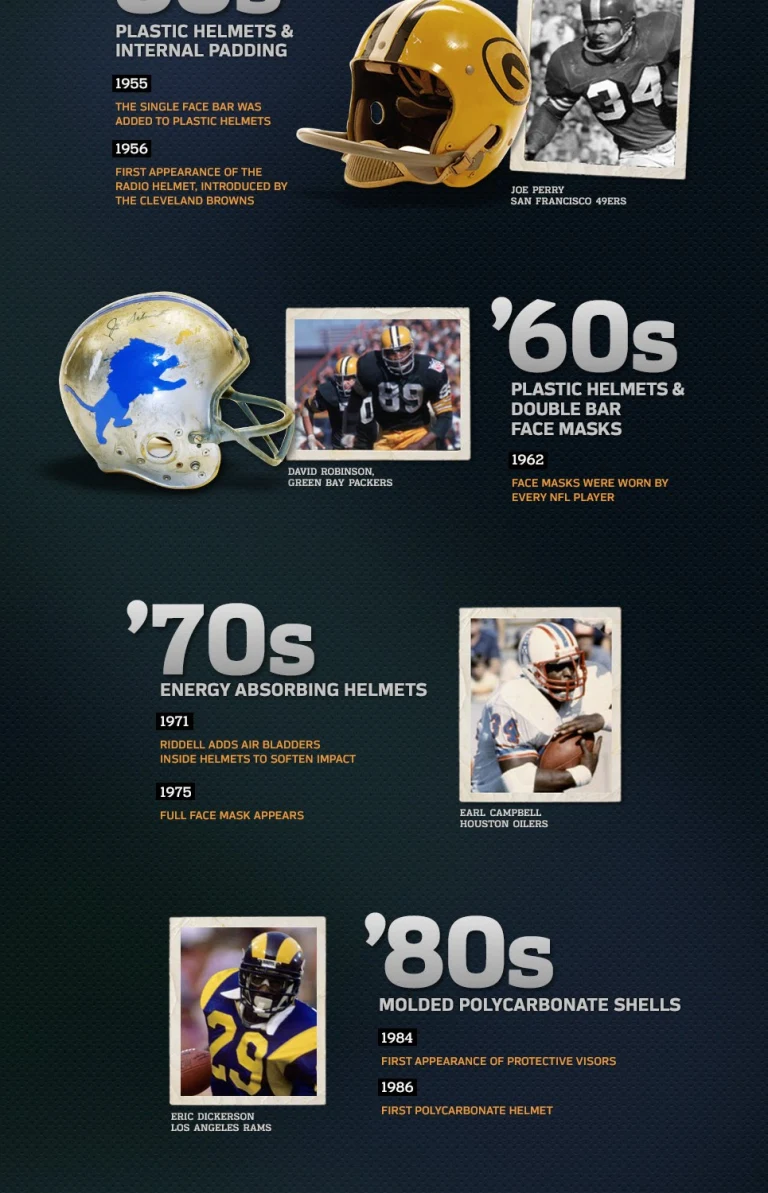
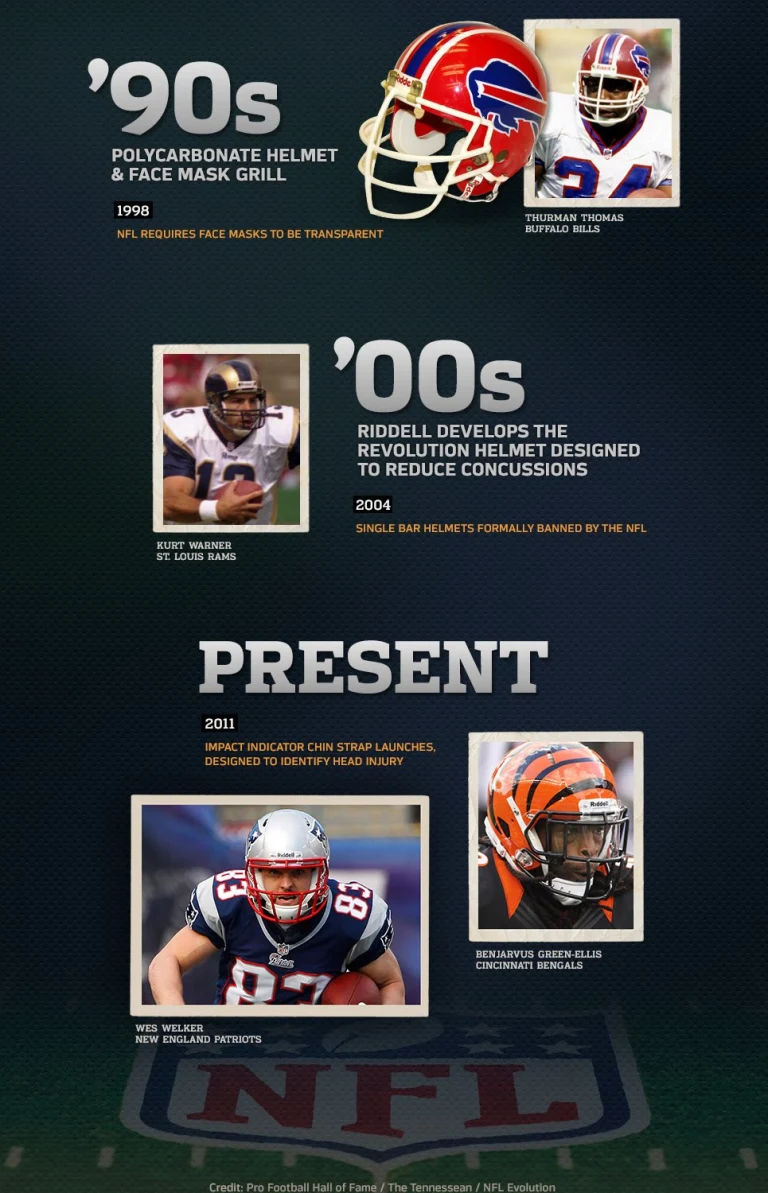
Shoulder Pads
Shoulder pads first started to be worn by players shortly after 1910. President Teddy Roosevelt had decried football as a violent game and said changes were going to have to be made to protect players in order to keep the game legal. Leather shoulder pads were worn to protect the players’ upper bodies. However, shoulder pads weren’t commonly worn by all football athletes until the 1950s, and still they were just pieces of leather strapped together. By the 1960s Shoulder pads consists of foam and hard plastic , but the pads didn’t breathe, so while they protected players from injury, they tended to cause the players to dehydrate quicker, leading to exhaustion. At the start of this century, new synthetic fibers were added to shoulder pads to make them lighter and cooler, thus preventing the dehydration of football athletes during competition
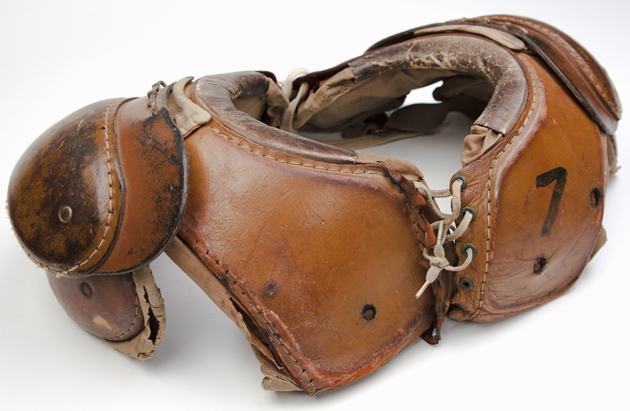
Leather shoulder pads worn before 1960s.
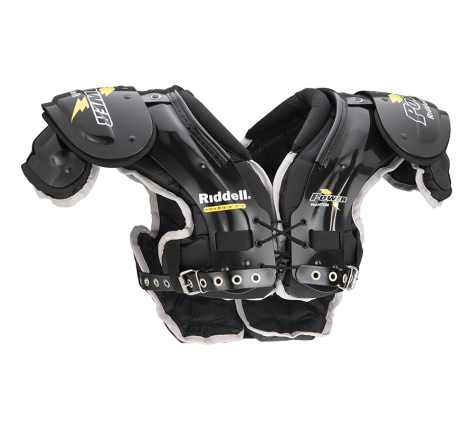
Plastic hard shell shoulder pads with new synthetic fibers worn by football athletes today.